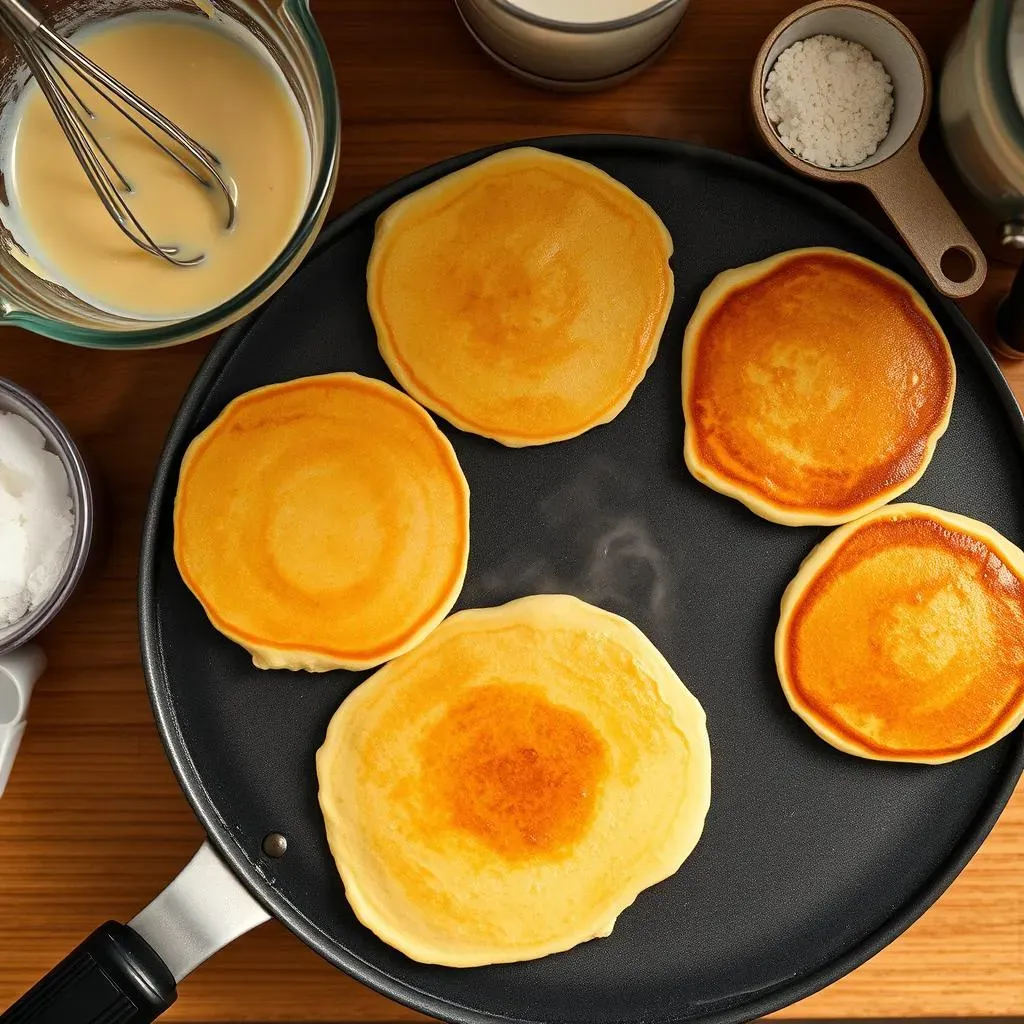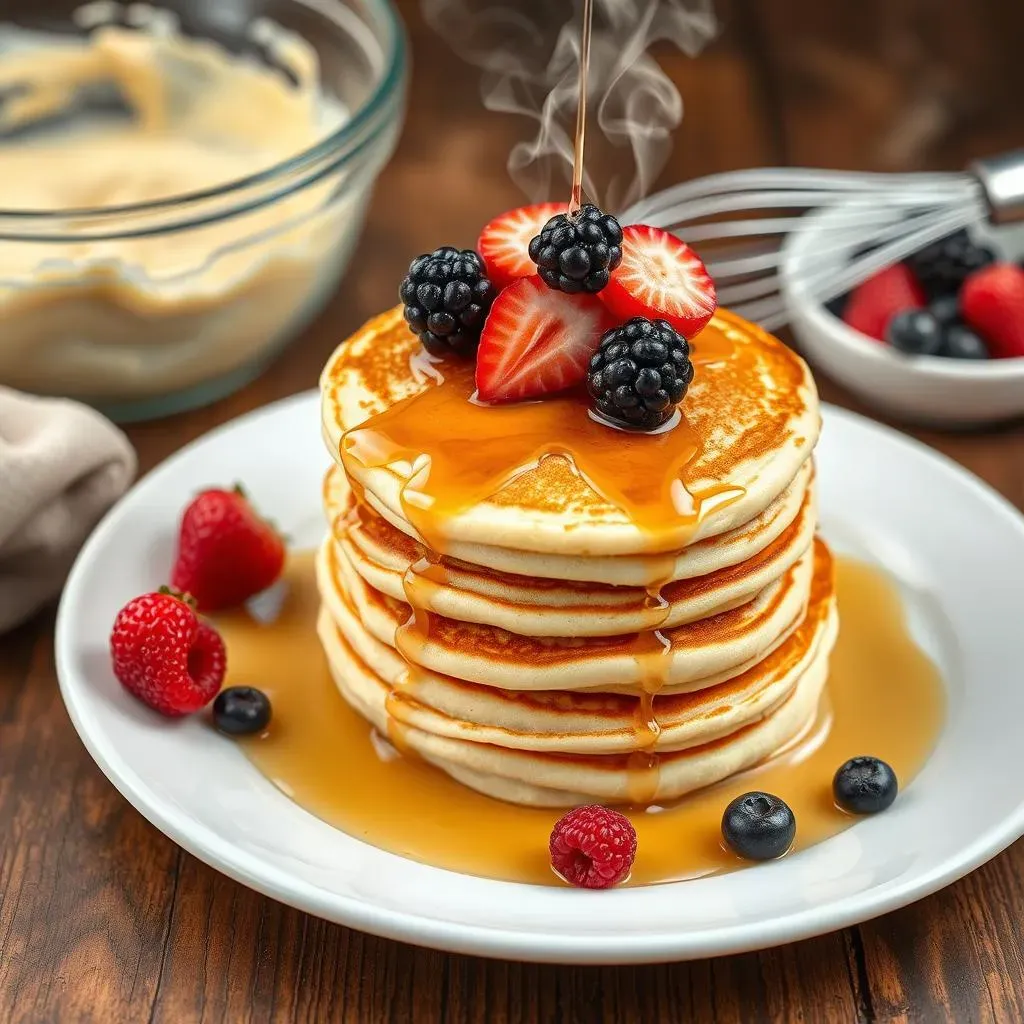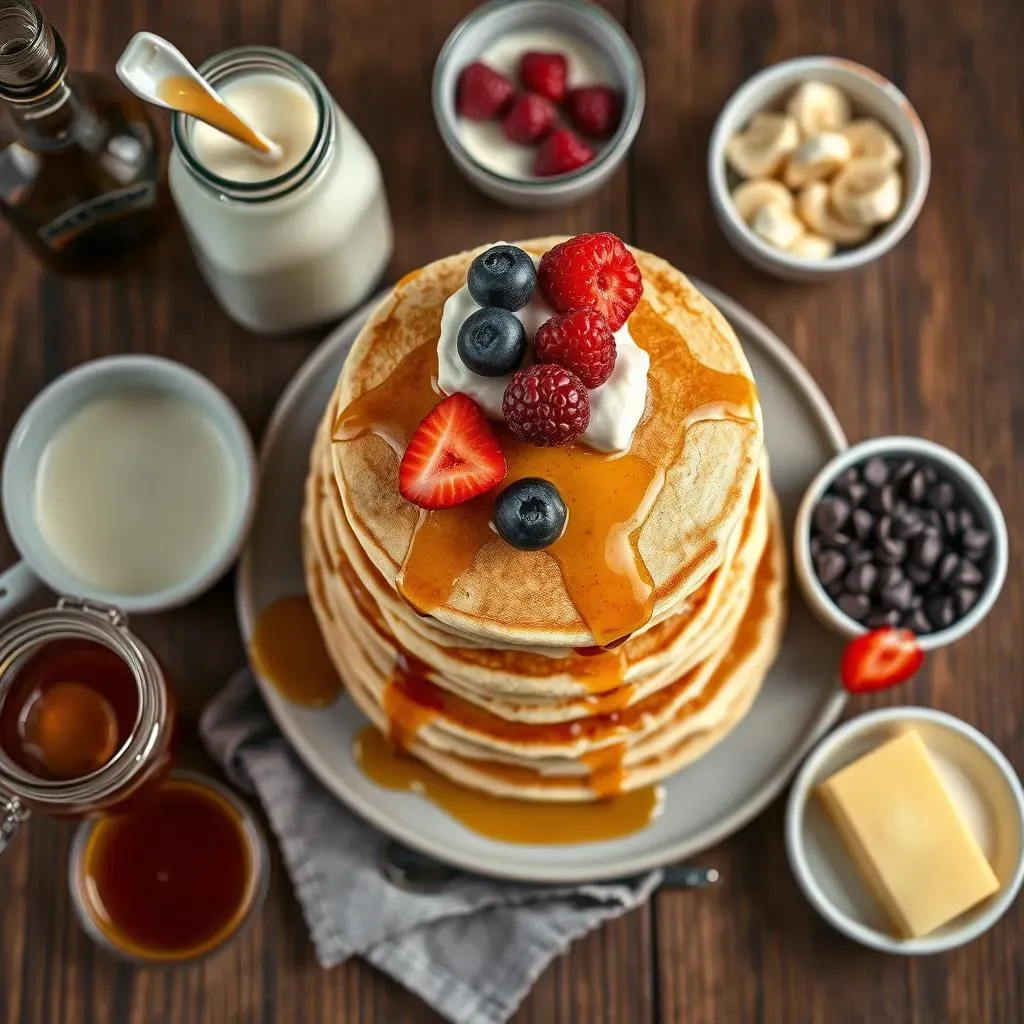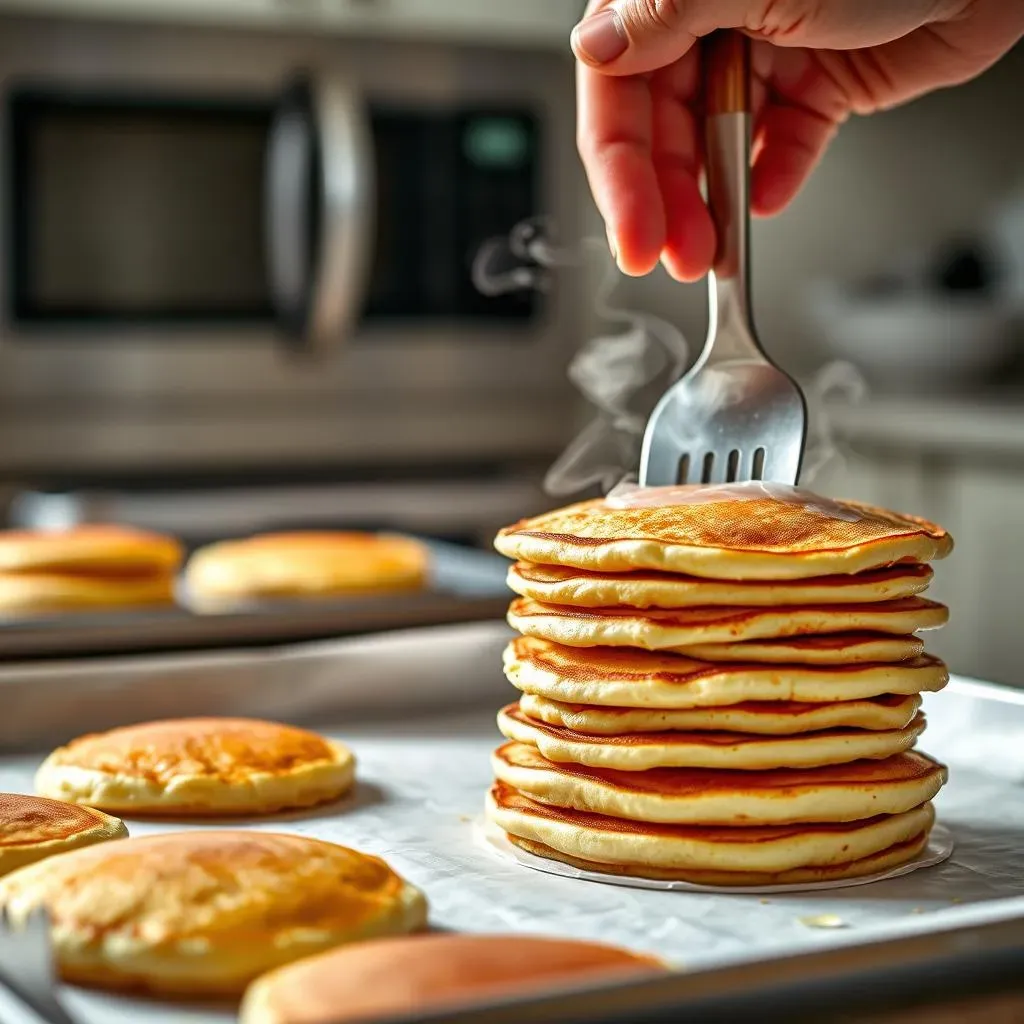Table of Contents
Who doesn't love a stack of warm, fluffy pancakes on a weekend morning? But let's be honest, sometimes those Pinterest-worthy pancake photos feel miles away from the sad, flat discs we end up with. The secret isn't some culinary magic trick; it's all about having a reliable pancake recipe with measurements. Forget vague instructions and guesswork. This guide will give you the exact quantities and simple techniques you need to create perfect pancakes every single time. We'll start with a basic recipe that's so easy, even a kitchen newbie can nail it. Then, we'll dive into the tips and tricks that separate good pancakes from great ones – think fluffy texture, golden-brown color, and that irresistible melt-in-your-mouth quality. Feeling adventurous? We've got variations for buttermilk pancakes, yogurt pancakes, and more. Plus, we'll cover the best ways to store and reheat your pancakes, so you can enjoy them all week long. So grab your whisk and let's get flipping!
Mastering the Basics: A Simple Pancake Recipe with Measurements

Mastering the Basics: A Simple Pancake Recipe with Measurements
The Core Ingredients: Your Pancake Foundation
let's get down to brass tacks. You don't need fancy ingredients for killer pancakes. We're talking pantry staples here. All-purpose flour is your go-to, but we'll chat about alternatives later. Sugar adds a touch of sweetness and helps with browning. Baking powder is the magic ingredient that gives us that fluffy lift. A pinch of salt balances the flavors. Milk provides moisture and richness. An egg binds everything together. And melted butter (or oil) adds flavor and prevents sticking. See? Nothing scary.
Here's the exact breakdown you need for a batch of about 6-8 pancakes:
- 1 1/2 cups all-purpose flour
- 3 1/2 teaspoons baking powder
- 1 tablespoon sugar
- 1/4 teaspoon salt
- 1 1/4 cups milk
- 1 egg
- 3 tablespoons melted butter (or vegetable oil)
Step-by-Step: From Bowl to Griddle
Alright, now for the fun part. In a large bowl, whisk together the flour, baking powder, sugar, and salt. In a separate bowl, whisk together the milk, egg, and melted butter. Pour the wet ingredients into the dry ingredients and gently stir until just combined. Don't worry about getting it perfectly smooth; a few lumps are actually a good thing! Overmixing develops the gluten in the flour, resulting in tough, chewy pancakes – and nobody wants that.
Heat a lightly oiled griddle or frying pan over medium heat. Pour 1/4 cup of batter onto the hot griddle for each pancake. Cook for 2-3 minutes per side, or until golden brown and cooked through. Flip when bubbles start to form on the surface and the edges look set. Serve immediately with your favorite toppings. Boom! You've got pancakes.
Step | Description |
|---|---|
1 | Combine dry ingredients. |
2 | Combine wet ingredients. |
3 | Gently mix wet and dry. |
4 | Cook on a hot griddle. |
Achieving Pancake Perfection: Tips and Tricks for Fluffy Results

Achieving Pancake Perfection: Tips and Tricks for Fluffy Results
Don't Overmix: The Golden Rule
Seriously, I can't stress this enough. Overmixing is the enemy of fluffy pancakes. When you mix the batter too much, you develop the gluten in the flour, which makes the pancakes tough and chewy. Aim for a batter that's just combined, with a few lumps still visible. Those lumps will cook out, and you'll be rewarded with light and airy pancakes. Think of it like this: you're gently folding the ingredients together, not beating them into submission.
Have you ever wondered why restaurant pancakes are so light? It's because they're not overmixing! They often use a special mixer that barely combines the ingredients. You can achieve the same effect at home with a little care.
The Resting Game: Let the Batter Chill
This is another pro tip that makes a huge difference. After you've mixed your batter, let it rest for about 5-10 minutes before cooking. This allows the baking powder to fully activate, creating more air bubbles in the batter. It also gives the gluten a chance to relax, resulting in a more tender pancake. Trust me, it's worth the wait.
While the batter is resting, you can get your griddle nice and hot and prepare your toppings. It's all about multitasking, my friend!
Tip | Why It Works |
|---|---|
Resting the batter | Allows baking powder to activate and gluten to relax. |
Hot griddle | Creates a golden-brown crust and even cooking. |
Don't press down | Keeps the pancakes light and airy. |
Temperature Control: Finding the Sweet Spot
The temperature of your griddle is crucial for pancake success. Too hot, and the pancakes will burn on the outside while remaining raw on the inside. Too cold, and they'll be pale and flat. Aim for medium heat – about 350°F (175°C) if you're using an electric griddle. If you're using a stovetop griddle, test the temperature by flicking a few drops of water onto the surface. If they sizzle and evaporate quickly, it's ready to go.
Also, don't overcrowd the griddle. Give each pancake enough space to spread out and cook evenly. And resist the urge to press down on them with your spatula! That will only deflate them and make them dense. Let them do their thing.
Pancake Recipe Variations: Buttermilk, Yogurt, and More

Pancake Recipe Variations: Buttermilk, Yogurt, and More
Buttermilk Bliss: Tangy and Tender
Want to take your pancakes to the next level? Swap out the regular milk for buttermilk! Buttermilk adds a subtle tang that complements the sweetness of the pancakes perfectly. It also contains lactic acid, which helps to tenderize the gluten in the flour, resulting in even more fluffy pancakes. It's a win-win!
To make buttermilk pancakes, simply replace the milk in the basic recipe with an equal amount of buttermilk. You might also want to add a pinch of baking soda to help neutralize the acidity of the buttermilk. Trust me, once you try buttermilk pancakes, you may never go back.
Yogurt Power: Creamy and Moist
Another fantastic way to add flavor and moisture to your pancakes is with yogurt. Yogurt pancakes are incredibly creamy and moist, with a slightly tangy flavor that's similar to buttermilk. Plus, yogurt is packed with protein, so you can feel good about starting your day with a healthy and delicious breakfast.
To make yogurt pancakes, replace half of the milk in the basic recipe with an equal amount of plain yogurt (Greek or regular). You can also add a splash of vanilla extract for extra flavor. The yogurt will make the batter a bit thicker, so you might need to add a little extra milk to reach the desired consistency. Don't be afraid to experiment!
Variation | Key Ingredient | Flavor Profile |
|---|---|---|
Buttermilk Pancakes | Buttermilk | Tangy, tender |
Yogurt Pancakes | Yogurt | Creamy, moist, slightly tangy |
Banana Pancakes | Mashed banana | Sweet, fruity, moist |
Beyond the Basics: Exploring Flavor Combinations
Once you've mastered the basic pancake recipe and the buttermilk and yogurt variations, the possibilities are endless! You can add all sorts of ingredients to customize your pancakes to your liking. Try adding mashed bananas for a sweet and fruity twist, or chocolate chips for a decadent treat. You can also add spices like cinnamon, nutmeg, or cardamom for a warm and cozy flavor.
Another fun idea is to add extracts like vanilla, almond, or lemon. And don't forget about toppings! Fresh fruit, whipped cream, syrup, chocolate sauce – the sky's the limit. Get creative and have fun experimenting with different flavor combinations. After all, pancakes are all about enjoying yourself!
Storing and Reheating Pancakes: Keeping the Fluff Alive

Storing and Reheating Pancakes: Keeping the Fluff Alive
The Right Way to Store: Preventing Pancake Graveyard
so you've made a glorious stack of pancakes, but life happens, and you can't eat them all right now. Don't worry, you can totally save them for later! The key is to store them properly to prevent them from becoming a sad, sticky mess. First, let them cool completely. This is crucial. Warm pancakes will create condensation in the container, making them soggy.
Once they're cool, stack them in a single layer in an airtight container or a zip-top bag. If you're stacking multiple layers, place a piece of parchment paper or wax paper between each layer to prevent them from sticking together. This little trick makes a world of difference when you're trying to reheat them later. Trust me, you don't want to be wrestling with a giant pancake blob.
Reheating 101: Bringing Back the Fluff
Alright, your pancake craving has returned, and you're ready to resurrect those stored pancakes. You've got a few options here, and the best method depends on how many pancakes you're reheating and how much time you have. My personal favorite is the oven. Preheat your oven to 350°F (175°C) and place the pancakes in a single layer on a baking sheet. Cover them loosely with foil to prevent them from drying out, and heat for about 5-10 minutes, or until warmed through.
If you're only reheating a few pancakes, the microwave is a faster option. Place them on a microwave-safe plate and cover them with a damp paper towel. Microwave on medium power for 30-60 seconds, or until heated through. Be careful not to overcook them, or they'll become tough and rubbery. You can also use a toaster! Just pop them in like you would with bread, and toast until warmed through.
Freezing for Future Fluffiness: Long-Term Pancake Love
Want to keep pancakes on hand for those busy mornings when you barely have time to breathe? Freezing is your friend! The process is similar to storing them in the fridge, but with a few extra steps. Again, let the pancakes cool completely. Then, place them in a single layer on a baking sheet lined with parchment paper. Freeze for about 30 minutes, or until they're solid. This prevents them from sticking together when you transfer them to a freezer bag.
Once the pancakes are frozen solid, transfer them to a freezer bag or airtight container. Label the bag with the date, so you know how long they've been in the freezer. Frozen pancakes will keep for up to 2-3 months. When you're ready to reheat them, you can use any of the methods mentioned above. Just add a few extra minutes to the heating time, since they're starting from frozen. And that's it! You've got pancakes ready whenever you need them.
Reheating Method | Pros | Cons |
|---|---|---|
Oven | Even heating, prevents sogginess | Takes longer |
Microwave | Fastest option | Can make pancakes tough |
Toaster | Good for small batches | May dry out pancakes |
Conclusion: Pancake Mastery Achieved!
With this pancake recipe with measurements and the tips we've covered, you're now equipped to whip up a batch of perfect pancakes whenever the craving strikes. Whether you stick to the classic recipe or experiment with exciting variations, remember that the key is to have fun and enjoy the process. So go ahead, unleash your inner pancake artist and create a breakfast masterpiece that will impress your family and friends. Happy flipping!